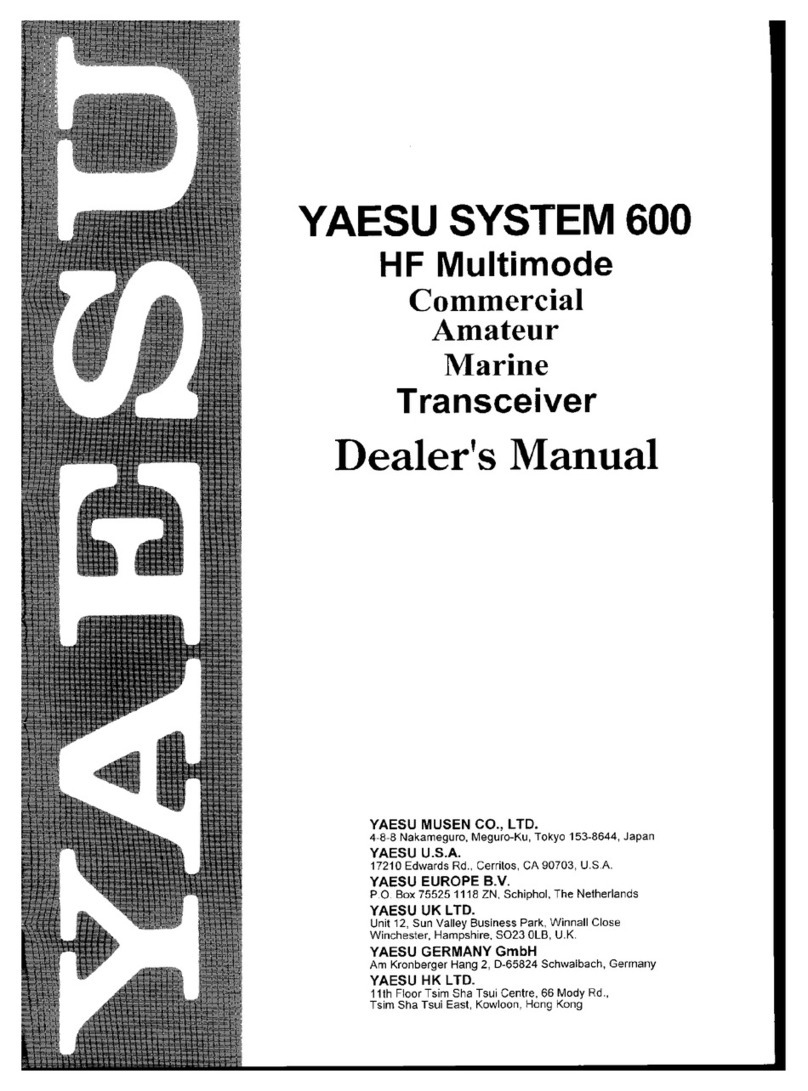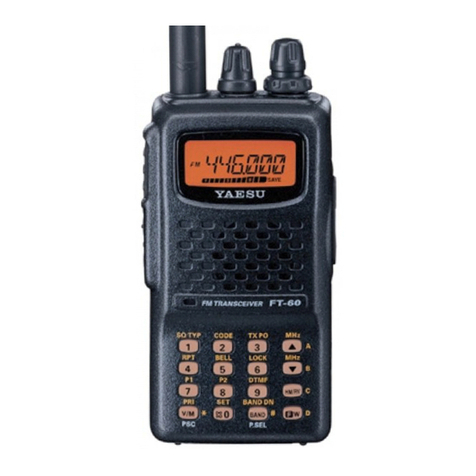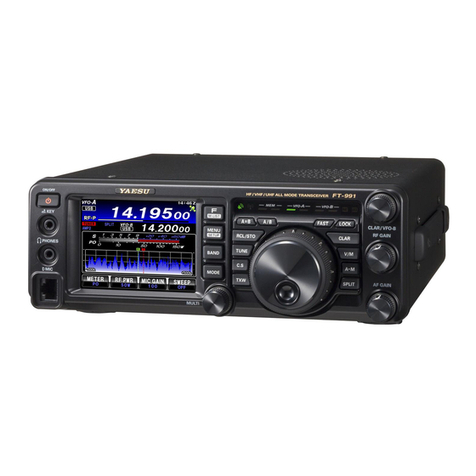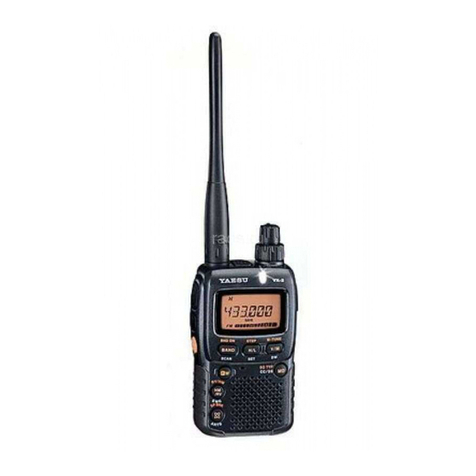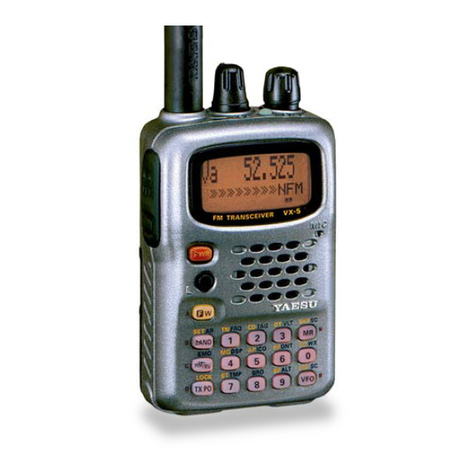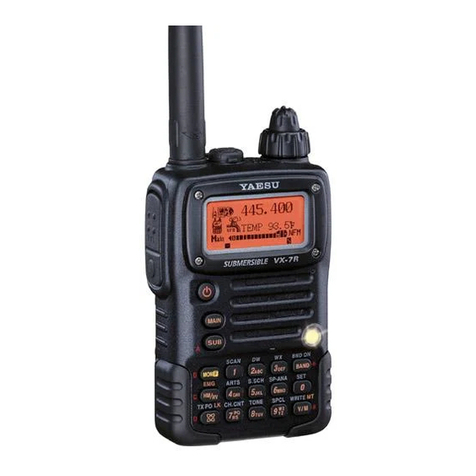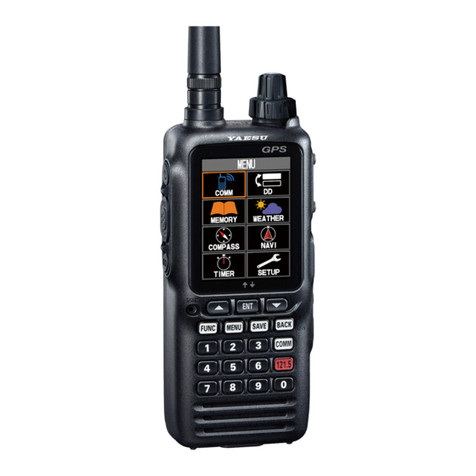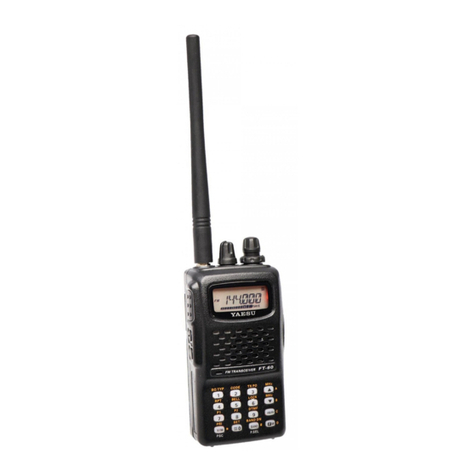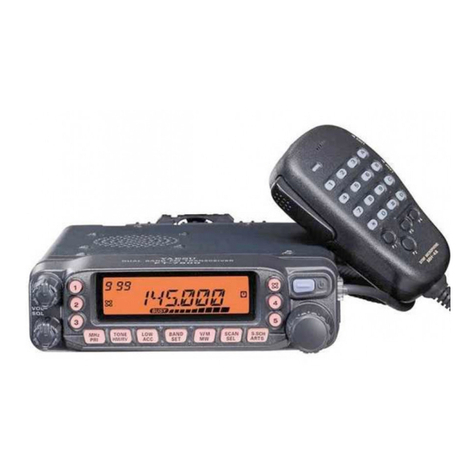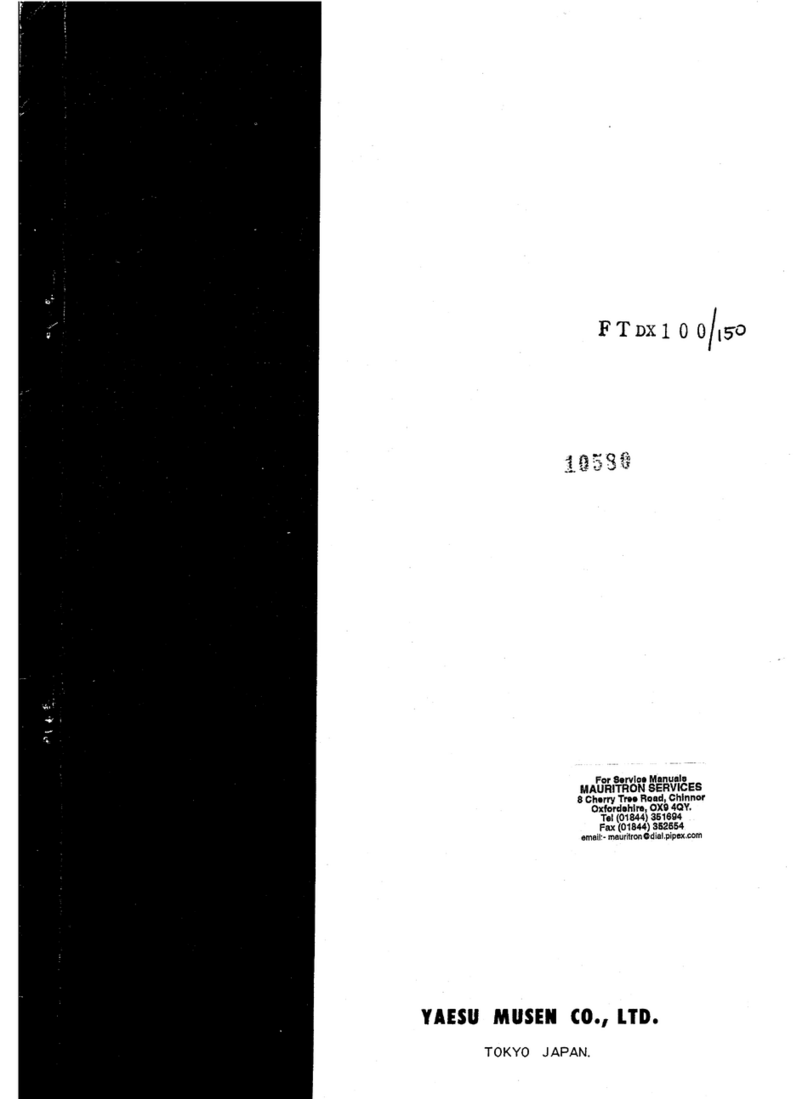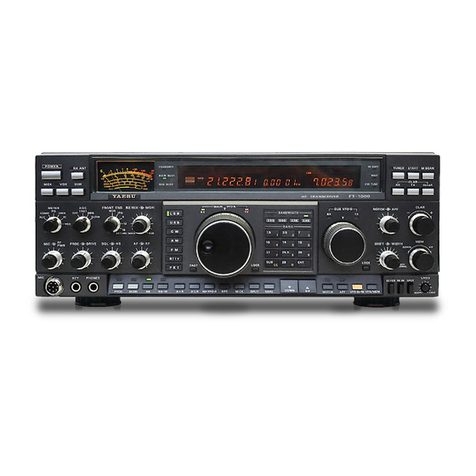
Introduction ....................................................................................................................... 1
About this manual ............................................................................................................ 1
Quick Guide ...................................................................................................................... 2
Controls & Connections .................................................................................................. 3
Transceiver ..................................................................................................................... 3
Display ............................................................................................................................ 5
The Keypad Functions ................................................................................................... 7
Safety Precautions (Be Sure to Read) ............................................................................ 8
Preparation ...................................................................................................................... 11
Installing the Antenna .................................................................................................. 11
Attaching the Belt Clip ................................................................................................. 11
Installing the Battery Pack ........................................................................................... 11
Removing the Battery Pack ......................................................................................... 11
Supplied Accessories and Options .............................................................................. 12
Supplied Accessories .................................................................................................. 12
Available Options ......................................................................................................... 12
Charging the Battery Pack ............................................................................................. 12
Charging the Battery Pack using the Rapid Charger (SBH-22) ................................. 12
Operation ......................................................................................................................... 13
Switching between the VFO-A and VFO-B ................................................................. 13
Tuning to a Frequency ................................................................................................. 13
Changing the Frequency Step .................................................................................. 14
Adjusting the squelch setting ....................................................................................... 14
Transmission ................................................................................................................ 14
Changing the Transmission Power Level .................................................................... 15
Locking Keys and PTT switch ...................................................................................... 15
Programmable key [P1]/[P2] ........................................................................................ 16
Repeater Operation ........................................................................................................ 17
Communicating Via the Repeater ............................................................................... 17
Tone Calling (1750 Hz) ................................................................................................. 17
Using the Memory .......................................................................................................... 18
Registering to Memory Channels ................................................................................ 19
Memory Recall ............................................................................................................. 19
Clearing Memories ....................................................................................................... 20
Recalling the Home Channels ..................................................................................... 20
Changing the Home Channel Frequency .................................................................... 20
Memory Channel Scanning ......................................................................................... 21
Setting the Receive Operation When Scanning Stops ............................................... 21
Split Memory ................................................................................................................ 22
Using Memory Tag ....................................................................................................... 22
Using Memory Bank ..................................................................................................... 22
Scanning Function ......................................................................................................... 22
VFO Scan ..................................................................................................................... 22
Programmed VFO Scan ............................................................................................... 23
Weather Broadcast Channels scan (In the USA) ........................................................ 23
Weather Alert Scan (In the USA) ................................................................................. 24
Skip Memory Channel .................................................................................................. 24
Programmable Memory scan (PMS) ........................................................................... 24
Dual Receive (DW) feature .......................................................................................... 24
Convenient Functions .................................................................................................... 25
VOX Operation ............................................................................................................. 25
VFO Split Mode ............................................................................................................ 25
Tone Squelch feature ................................................................................................... 25
Digital Code Squelch (DCS) feature ............................................................................ 25
New PAGER (EPCS) feature ....................................................................................... 25
Using Set Mode ............................................................................................................... 26
Tables of Set Mode Operations ................................................................................... 26
Restoring to Defaults (Reset) / Setting the Preferred Operating Mode ..................... 29
Specifications ................................................................................................................. 30
Contents

